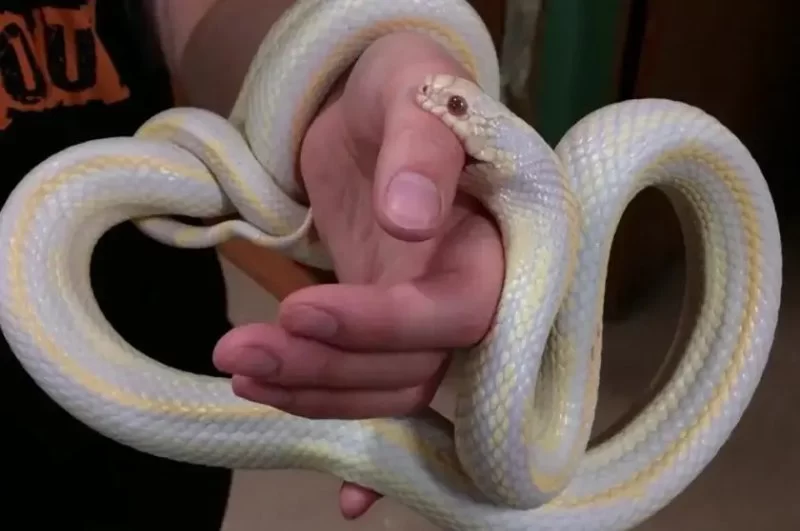- #understanding-non-venomous-snake-bites—common-species-and-behavior
- #first-aid-for-non-venomous-snake-bites—step-by-step
- #when-to-seek-medical-attention—for-non-venomous-bites
- #cleaning-and-disinfecting—the-right-way
- #managing-pain-and-swelling—safe-methods
- #real-world-stories—encounters-and-lessons-learned
- #myths-and-misconceptions—about-non-venomous-bites
- #long-term-care-and-monitoring—avoiding-complications
- #preventing-future-bites—awareness-and-safety-habits
- #pine-cliff-resort—resources-and-outdoor-safety-services
Understanding Non-Venomous Snake Bites — Common Species and Behavior
Non-venomous snake bites are often more startling than dangerous, but knowing which species you might encounter can help you react calmly. In North America, common non-venomous snakes include garter snakes, corn snakes, rat snakes, and water snakes. These snakes usually bite in self-defense when they feel threatened, not to attack. Their bites can still break the skin, leaving puncture marks and minor bleeding, but they do not inject venom.
Recognizing the difference
Non-venomous bites typically show a U-shaped pattern of small teeth marks, without the deep punctures of venomous fangs. Still, any bite from a wild animal should be treated seriously to avoid infection.
First Aid for Non-Venomous Snake Bites — Step-by-Step
1) Stay calm and move to safety
Back away from the snake to avoid further bites. Do not attempt to capture or harm it; instead, note its color and markings for identification.
2) Control any bleeding
Most bites only cause minor bleeding. Apply gentle pressure with a clean cloth or bandage until it stops.
3) Clean the wound thoroughly
Wash the bite area with mild soap and running water for at least 5 minutes. This step is crucial to remove bacteria from the snake’s mouth and surrounding environment.
4) Disinfect and cover
Apply an antiseptic like iodine or chlorhexidine, then cover the wound with a sterile bandage to protect it from dirt.
When to Seek Medical Attention for Non-Venomous Bites
Although most non-venomous bites heal without complications, seek medical care if:
- The wound shows signs of infection (redness, swelling, pus, warmth).
- You haven’t had a tetanus booster in the past 10 years.
- You experience excessive swelling, severe pain, or allergic reactions like hives or difficulty breathing.
Cleaning and Disinfecting — The Right Way
Choosing the right antiseptic
Avoid using harsh chemicals like hydrogen peroxide repeatedly, as they can slow healing. Opt for povidone-iodine or a mild antiseptic spray.
Changing dressings
Replace the bandage at least once daily or if it becomes wet or dirty. Always wash hands before and after handling the wound.
Managing Pain and Swelling — Safe Methods
Ice and elevation
Apply a cold pack wrapped in cloth for 10–15 minutes at a time, and keep the injured area elevated to reduce swelling.
Over-the-counter pain relief
Non-prescription medications like acetaminophen or ibuprofen can help manage discomfort. Follow dosage instructions carefully.
Real-World Stories — Encounters and Lessons Learned
Case: Hiking mishap near a lake
Tom, an avid hiker, was bitten by a water snake while wading along the shore. He initially panicked, thinking it might be venomous. Remembering first aid advice, he cleaned the wound, applied antiseptic, and later confirmed with a ranger it was non-venomous. The bite healed within a week without complications.
Takeaway
Knowledge and calm action can make the difference between a minor incident and a stressful emergency.
Myths and Misconceptions About Non-Venomous Bites
Some believe non-venomous bites can be ignored completely. While they aren’t life-threatening, untreated bites can still become infected. Another myth is that applying a tourniquet or cutting the wound will “draw out toxins”—these actions are unnecessary and can cause more harm.
Long-Term Care and Monitoring — Avoiding Complications
Watch for delayed symptoms
Occasionally, swelling or redness may appear several days later. This could indicate a secondary infection that requires antibiotics.
Scar prevention
Once healed, applying vitamin E or silicone gel can help minimize scarring, especially for bites on visible areas like hands or ankles.
Preventing Future Bites — Awareness and Safety Habits
Wear protective clothing
Long pants and sturdy boots reduce the chance of skin contact during hikes or outdoor work.
Learn local snake behavior
Understanding when and where snakes are most active—often during warm mornings or evenings—can help you avoid surprise encounters.
Pine Cliff Resort — Resources and Outdoor Safety Services
Why choose Pine Cliff Resort for outdoor adventures
Whether you’re hiking, camping, or enjoying water activities, Pine Cliff Resort offers guided nature walks, safety briefings, and access to first-aid resources. Our staff can provide quick, knowledgeable assistance in case of minor injuries like non-venomous snake bites.
Enhancing your trip
By combining adventure with preparedness, Pine Cliff Resort ensures that your outdoor experiences are both thrilling and safe, letting you focus on the beauty of nature without unnecessary risks.







